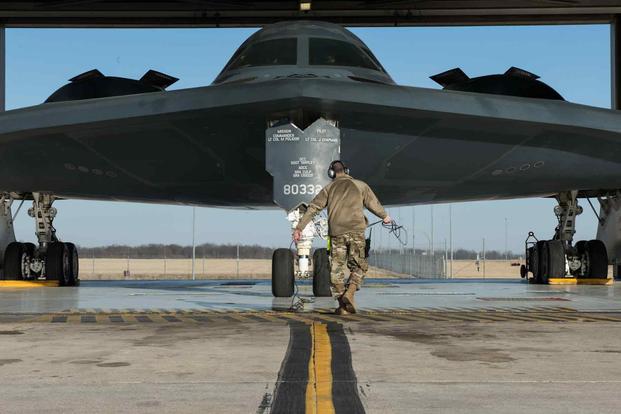Whiteman Air Force Base in Missouri said it is conducting a new round of radon testing at a base day care more than a year after high levels of the radioactive gas -- which can cause lung cancer -- were found in rooms of the facility and nothing was done.
In an Oct. 10 memo sent to all personnel at the base, officials said that testing was done at the child development center in early 2022 and two rooms were found to have the gas in levels that required "mitigation to reduce the radon levels below the acceptable federal level."
An audit last month of radon sampling at the base revealed the 2022 findings "were not acted upon," the memo detailed. Now, the Air Force base said, the child development center is undergoing a new series of radon testing to see what the current levels are.
Read Next: Senior Army Leaders Agree Soldiers Need More Time at Home, But There's No Plan to Make It Happen
"We are reviewing internal records and working with our partners at [the U.S. Air Force School of Aerospace Medicine] to determine how this took place," 2nd Lt. Lindsey Weichel, a spokesperson for the 509th Bomb Wing, said in an emailed statement. "We are vigorously investigating the possible presence of radon at the Whiteman Child Development Center."
The radon was detected in room 46, used for infants between the ages of six weeks to 12 months, at a level of 1.24 working level month per year -- or 1.24 WLM/yr -- which is one type of measurement used to show exposure to the gas. It was also determined that room 50, which is used for pre-toddlers ranging in age from 12 to 24 months, had radon at 6.33 WLM/yr, according to the base.
The Air Force's exposure limit is 0.8 WLM/yr, per the memo.
The memo was first posted on the Air Force amn/nco/snco Facebook page, where airmen share inside information. The document was confirmed as accurate and authentic to Military.com by officials at the base.
Radon is a naturally occurring gas that is radioactive, colorless, tasteless and odorless that causes lung cancer, according to the American Lung Association. Exposure to the gas is the second-leading cause of lung cancer in the country behind smoking and results in an estimated 21,000 deaths annually.
It is absorbed into the body when radioactive particles are slowly released as the gas begins to decay and it can be inhaled into the lungs.
The Centers for Disease Control and Prevention says that, due to a child's lung size, age and breathing rates, they could experience higher doses of radiation.
"Risk of lung cancer in children resulting from exposure to radon may be almost twice as high as the risk to adults exposed to the same amount of radon," according to the CDC's Agency for Toxic Substances and Disease Registry website. "If children are also exposed to tobacco smoke, the risk of lung cancer is at least 20 times greater."
In a question-and-answer sheet circulated with the memo, base officials claimed "your child's risk of developing lung cancer as a result of the exposure at the Child Development Center is significantly less than 1%."
The 509th Medical Group has created appointment times for "exposed children," and a town hall was hosted on Oct. 13 to address the issues, according to the memo.
"It goes without saying that we take this seriously, and we are implementing steps to ensure the safety of children and workers at the site while our bioenvironmental engineers conduct a thorough assessment and determine what level of radon is present and what mitigation steps are appropriate," Weichel said.
-- Thomas Novelly can be reached at thomas.novelly@military.com. Follow him on Twitter @TomNovelly.
Related: Pentagon Isn't Tracking Whether Privatized Housing Is Sickening Families, Watchdog Finds













